3D Blu-ray – What’s it all about?
To fulfill my duties as writer of this blog, I needed to write something during this week, since I hadn’t done anything last week. I didn’t really have any topics in mind, but all I’ve been reading about lately has been 3D this and 3D that, and I thought it might be worthwhile to join the hype wagon and write something about it. I’m still planning on writing a full 3D guide sometime in the unspecified future, so this blog post will try to keep it as a nice and simple FAQ type thing, in order to ensure people will actually still read the full guide if/when it is ever written.
What is 3D? How does it work?
Well, we interact with a three dimensional world (well not really, if you count time as the fourth dimension), but watching stuff on TV has always been a 2D affair. The flirtation with 3D motion pictures is nothing new though. How does 3D work? Well, in real life, depth perception is helped by the fact that our eyes are apart, seeing slightly different set of images (try closing one of your eyes, then the other). Our brain then process these set of images and we see in 3D. 3D movies and TV works the same way, by somehow presenting each of our eyes with a slightly different image from a slightly different angle, and “tricks” our brain into thinking that the picture is somehow coming out of a flat screen. The trick unfortunately doesn’t work for all people, as some suffer from what’s called Stereoscopic blindness.
In the olden days, they used anaglyph type of 3D. This is the one with the cheap paper glasses with blue and red lenses. The way they get each eye to see something different is to project a blue-ish set of images and red-ish set of images onto the screen at the same time, and the blue/red lenses will filter out the corresponding colour, and thus provide each eye with different images to trick our brains. It works, but the colour is all washed out because, well, you’re filtering out the colours red and blue.
Today’s 3D uses a similar principle, but instead of using colour filters, we used more advanced types of filtering. The ones with active glasses work by quickly blocking each lens (shuttering it), and so at any one moment in time, while wearing those glasses, we’re only seeing out of one eye. The movie screen or TV is synced to the glasses so that it also alternates between displaying the image for the one eye, and then for the other eye. So let say there are 60 frames in a second of video footage, then for the first frame, it will show the image intended for the left eye, and your glasses will block the right eye lens so that you’re only seeing the left eye image in your left eye. Then for the second frame, repeat the same for the other eye. And repeat. If the refresh rate (the number of frames per second) is high enough, then we won’t really notice that we’re only really seeing out of one eye at all times, and the two different images for each eye tricks our brain effectively. Do it quickly enough, and all you see on the screen (without the glasses) is a set of double images.
The other type uses passive glasses, where each lens is polarised differently to only allow certain types images through, and it’s the special film screen or TV that present these alternating types of images in a way that. The effect is the same, in that each eye sees something different and the 3D effect is created.
Both of these techniques ensure you don’t get the washed out colours of the red/blue glasses.
Of course, with each eye only seeing effectively half the frames, the reduction frame-rate will cause the motion to be less smooth, as any gamer will know. To solve this problem, the refresh rate of the display has to be increased, double the normal rate in fact. For TVs, this means 120 Hz, compared to the normal 60 Hz.
3D without glasses? Why should I just wait for that?
This is another question I’ve seen asked a lot. There are prototype screens that can do 3D without glasses, and Nintendo’s upcoming 3DS portable console will also do 3D without glasses. Most of these use what is called the Parallax Barrier method, which put simply, uses a barrier in front of a normal screen with “slits” that allow certain pixels through depending on your viewing angle. In many ways, it’s similar to those lenticular 3D effects that you sometimes get on cups, free collector cards, and used as DVD/Blu-ray covers (on the US edition of the Harry Potter and the Half-Blood Prince Blu-ray, for example). And as each eye views the image from a slightly different angle, this means each eye is allowed to see different sets of pixels through the slits, and thus, create the 3D effect. So far so good. But the problem with blocking out pixels is that you see less of them at each moment in time. So parallax TVs so far only have 720p or lower resolution, and you’ll need a panel with far greater resolution than 1080p to produce the same 1080p 3D as seen via the 3D glasses. The other major problem is the limited viewing angles, with only a few sweet spots where the 3D effect works, move away a bit, or stand or sit down, and it doesn’t work.
So in terms of a technology for prime time viewing on large screen TVs, the Parallax Barrier method still has significant issues that needs to be resolved first, if they can be resolved at all that is.
What is 3D Blu-ray?
3D Blu-ray is a new standard for Blu-ray designed specifically for showing 3D movies at home. It has been designed in a way that will ensure compatibility between the various technologies used to transmit/store 3D movie content, as well as the various way for watching 3D content, including using passive or active glasses. In essence, it tells studios how to encode 3D movies on Blu-ray discs, and it also sets the way 3D Blu-ray players output the 3D Blu-ray movies so that it will work on all types of 3D TVs, the kind that uses passive glasses, or the kind that use active ones. It’s one of the most significant developments on Blu-ray, not just because that the standard was set so quickly with universal industry support, which is very rare these due to conflicting interests by, well, everyone.
In other words, if you buy a Blu-ray movie with the “Blu-ray 3D” logo, it should play perfectly on a Blu-ray player also marked with the same logo, and if that Blu-ray player is connected to a 3D TV that is compatible with 3D Blu-ray, then you can be guaranteed that it will all just work, even if you mix players and TVs from different manufacturers. So that Panasonic 3D Blu-ray player will work when connected to that Samsung 3D TV, and vice versa. However, if your Blu-ray player doesn’t say it is 3D Blu-ray compatible, then it isn’t – you will need a new Blu-ray player. Some players can be software/firmware updated to support 3D Blu-ray, like the PS3. But most can’t be updated. Some TVs have been sold in the past as “3D ready”, but the reality is that if you didn’t buy your 3D TV this year, it probably won’t work with 3D Blu-ray unless you read it on the manufacturer’s website that it will work, or that it will work with some additional accessories.
The specifics of how 3D video is stored on Blu-ray is beyond the scope of this simple blog post, but since you have to store two different set of images, one for each eye, the movies will be of a larger file size, although with optimization, it’s not twice as large, only perhaps 50% more in most cases.
As for connecting your Blu-ray player to your TV, now that’s a topic for a whole different section.
HDMI 1.4? Do I need it?
There’s been a lot of confusion as to if you need HDMI 1.4 or not. Certainly, all the 3D TVs of this year and the 3D Blu-ray players will have HDMI 1.4, but make one thing clear – you do not need HDMI 1.4 for 3D. The evidence for this statement comes from the fact that the PS3, which features HDMI 1.3, can be upgraded via firmware to become 3D Blu-ray compatible. So if the PS3, with HDMI 1.3, can do 3D Blu-ray, there’s no reason why you need HDMI 1.4 to do Blu-ray either. Of course, this point is moot because all 3D hardware now are being sold with HDMI 1.4, and they will probably only work on hardware sold recently, which means everything will have 1.4 anyway. The major new feature of HDMI 1.4 are support for audio return channels (two way audio on the same cable), and Ethernet networking support built right into the cable itself.
In terms of cabling, you don’t need HDMI 1.4 cables. In fact, technically, there may not even be such a things as a HDMI 1.4 cable. What you need at the very least is a HDMI 1.3 cable that is rated category 2, or “high speed”. If you have such a cable, then 3D will work. Don’t believe me? Then believe the official HDMI website where it says “All High Speed HDMI cables will support 3D when connected to 3D devices”. The reason you might still want to get a HDMI cable rated for 1.4 is that they are guaranteed to work with 3D, and this may mean less hassle than trying to find out if the HDMI 1.3 cable you want to buy is “high speed” or not.
So if I don’t need HDMI 1.4, then why do I need a new 3D TV?
This is one question I see popping up on forums all the time. One of the requirements mentioned above is for your TV to do 120 Hz. Most TVs sold in the last few years can do this, some can even do 240 Hz, so why do you need a new TV?
The problem with previous 120 Hz displays is that, while they can display at 120 Hz, they can only accept a 60 Hz input. What happens internally on these TVs is that they do frame interpolation, or simply double the number of frames, to get the picture to display at 120 Hz, 240 Hz or even higher.
3D TVs are different in that they can accept a 120 Hz input and then display it as such. This is the only way to guarantee smooth motion during 3D, when each eye is only seeing half of the frames.
And of course for active shutter 3D displays (which represents the majority of 3D TVs on the market), it’s the TV that needs to sync with the glasses. An infrared signal between the TV and the glasses makes this happen, and your older TV will not have this capability. This is why glasses must be paired with the TV, and using Panasonic glasses on a Samsung TV won’t really work (well this is a bad example, because it actually does work if you turn the glasses upside down – but try using it on a Sony TV and it won’t work at all). There is a movement to get 3D glasses to be standardized, but don’t hold your breath.
Of course, if you older TV can accept 120 Hz inputs, and if there was some kind of dongle that adds the infrared communication between the TV and the glasses, then theoretically, this TV can be 3D ready. But there’s more profit in selling a brand new TV than a 3D dongle, so again don’t hold your breath waiting for such a solution.
LED/LCD versus Plasma – Which is better for 3D?
According to the LED/LCD manufacturers, LED/LCD gives you the best 3D experience. According to plasma TV manufacturers, plasma TVs gives you the best experience. The companies that make both types of TVs, like Samsung and Panasonic, are staying relatively quiet during this much heated debate.
LED/LCDs are better with brightness, and with the glasses providing a slightly dimmer picture, brightness may be key for good 3D.
On the other hand, for pixel response times, plasma TV are much much better than even the best LED/LCD. Plasma TVs, such as the Panasonic, can claim 0.001 ms pixel response times, while LED/LCD TVs response times are several magnitudes above this. The reason why this is important for 3D is that because the TV is rapidly displaying different frames for each of your eyes, and the transition between the frames has to be quick enough or you’ll get what is known as the “ghosting effect” or crosstalk. In essence, your left eye may be seeing what the right eye should be seeing if it all doesn’t happen quickly enough, and that ruins the 3D effect. Plasma TVs will have a degree of crosstalk as well, and Panasonic has gone the step further to reduce the phosphorescence decay times, as to minimize or eliminate crosstalk. Other plasma TVs, like the Samsungs, did come with ghosting problems, but firmware updates seems to have improved it as well, although others suspect it’s actually the bundled movie, Monsters vs Aliens, that is causing the ghosting because it wasn’t encoded properly.
That’s not to say that LED/LCD can’t reduce crosstalk, and both Sharp and Sony have confidently stated that they have solved this problem for their 3D LED/LCD panels.
Size is also an issue, and the bigger the screen, and better the 3D effects will “draw you into” the action. And since plasma TVs are cheaper than LED/LCDs for larger sizes, that’s another factor to consider.
Whether this, or any of what I said, is true really depends on which TV you want to buy. The best way is to go to your local electronics store and test the TV you plan to buy – that’s the only way you can be sure if crosstalk is an issue with your TV. Remember that fluorescent lighting can affect certain TVs and cause ghosting to occur, so make sure you go to a score with a test environment that emulates the typical lighting in people’s homes.
3D content – where is it?

Electronic manufacturers are bundling 3D Blu-ray movies with their hardware, here's Samsung with Monsters vs Aliens
The short answer is that it isn’t here yet. There are some 3D test channels, some 3D test material you can download and play with, some 3D games, and a very small selection of 3D Blu-ray movies that seem to be exclusively tied to certain manufacturers, but the reality is that 3D content, which will be here in force, is umm, not here yet. It’s the chicken and egg situation, software or hardware first, and in this case, hardware is coming before software.
For 3D Blu-ray movies, there’s almost nothing substantial you can buy to play on your brand new 3D Blu-ray player and 3D TV. Samsung is including the movie Monsters vs Aliens in their 3D Starter Kit, which also comes with two pairs of 3D glasses. Panasonic is giving away Ice Age 3 and Coraline 3D Blu-ray’s with their TVs. And Sony will have Cloudy with chances of Meatballs on 3D Blu-ray. If you somehow got hold of all these movies (eBay is your friend), then they will all work on your 3D Blu-ray player + 3D TV regardless of which manufacturer(s) made them (thanks to the 3D Blu-ray standard). But with content so thin, manufacturers are holding onto these exclusives and not making them available for general sale, as a way to entice buyers to buy their stuff. Panasonic is chummy with the people behind the movie Avatar, so will they get the 3D Blu-ray version of Avatar and make it an exclusive? Nobody knows, but it could happen!
Update: Sony will release Cloudy With a Chance of Meatballs on 3D Blu-ray “this summer” for general sale, and possibly as soon as this month. In fact, you can already pre-order the UK version on Amazon UK, although US buyers need to be careful of Blu-ray region issues, since the release could be region B only and would not play on US machines (best wait for the US 3D Blu-ray version, which can’t be that far away).
Update 2: The US Blu-ray 3D version of Cloudy With a Chance of Meatballs is now available.
But for lack of 3D content especially produced for 3D, if you have a Samsung or Sony 3D TV, then you can have unlimited 3D content by converting 2D broadcasts and movies into 3D, in real-time, on the fly. It isn’t real 3D because it’s not the filmmakers adding in 3D effects to the movie, it’s entirely the processor in your TV that is taking the images, analysing it, and then creating what it thinks should give you the best 3D depth effect. And it works!
It won’t give you the “in your face” type of 3D, but you will be able to see depth, and early accounts suggest that the conversion engine is pretty good at guessing which objects should be at the front, and which should be at the back. At the very least, it will give you some 3D stuff to look at while real 3D content is still arriving. Games, TV, DVDs, Blu-ray – anything can be 3D converted. And it even works with still pictures!
And for those still confused about real versus this kind of pseudo 3D, think DVD up-conversion, where DVDs can be upscaled to HD and still look damn good, even though it doesn’t look as good as real HD offered by Blu-ray movies. This is what the 2D to 3D conversion engine does – instead of HD up-conversion, it’s 3D up-conversion.
Some TVs can also convert 3D content back to 2D, with quality that is surely less than the original 2D version. So beware when you’re testing TVs at stores and the picture doesn’t look right, make sure the TV is playing a real 3D movie, and not doing any sort of 3D up-conversion, or 2D down-conversion if you’re testing the TV’s 2D capability.
Unfortunately, Panasonic TVs don’t have this capability, but hey, you’ll probably get Avatar 3D before anyone else, so it’s not all bad, and real 3D will be just around the corner anyway.
Do I need 3D?
Do you need anything? Do you really need that Blu-ray player? Do you really need to have a collection of 3000 movies at home? Do you need a 65″ TV when you already have a 55″?
I think this is a question only you can answer yourself. For some, 3D doesn’t even work because they are in the sizable minority that can’t see 3D. Others that suffer from sea sickness will find the experience intolerable as well. And many just don’t like having to put glasses on to watch movies (I, and other myopic and eye condition sufferers, have to put glasses on to see anything and everything).
Others will be thrilled about it and will be willing to pay the extra cost involved. The only advice I can give you is to try out the 3D demos that is (or will soon be) available at every major electronic retailer (just make sure you go to one that has the demo set up correctly, not using any sort of 3D up-conversion and with home lighting). Try it for yourself before you dismiss it entirely, and for those that haven’t seen a 3D movies since the blue/red glasses days, you owe it to yourself to try the new technology, which is entirely different to what you have experienced before.
2700+ words. Oh well, so much for keeping it nice and simple!

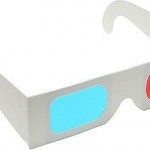
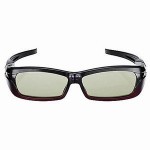
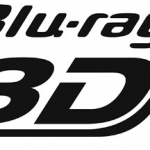
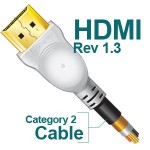
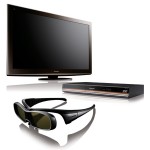

June 6th, 2010 at 7:48 pm
[…] I’ve learned about 3D Blu-ray, and 3D in general, recently. Taking the form of an FAQ, my 3D Blu-ray – What’s it all about? blog posts looks at the basic principles behind 3D displays, and tries to clear up some common […]
June 13th, 2010 at 7:07 pm
[…] HD/3D news. I know in my 3D Blu-ray – What’s it all about? blog post I mentioned the lack of 3D Blu-ray titles for general sale, but it seems I spoke too […]
June 20th, 2010 at 6:13 pm
[…] to produce 3D without glasses using the Parallax Barrier method I think, and I’ve updated my 3D Blu-ray – What’s it all about blog post/FAQ with one of more frequently asked questions of recent – why can the 3DS do 3D […]
October 10th, 2010 at 9:35 pm
[…] news this week as Toshiba released its first glasses-free 3D TVs. If you’ve read my earlier blog post/FAQ about 3D, you shouldn’t be too surprised about glasses-free 3D TVs, but as I mentioned before, there […]
June 4th, 2012 at 7:47 pm
nice infor! tnx..